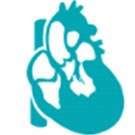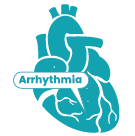
Once implanted, the device detects your heart rhythm through thin, insulated wires called leads, which are placed on or inside the heart muscle and attached to the device. When the device detects an abnormal heart rhythm, it sends an electrical shock to your heart muscle. The purpose, and end result, is improved cardiac function.
Cardiac Resynchronization Therapy improves symptoms of heart failure in about 50 percent of patients who have been treated maximally with medications but still have severe or moderately severe heart failure symptoms. Not only does it improve survival rate, quality of life, heart function and the abilities to exercise, it also helps to decrease hospitalizations in select patients with severe or moderately severe heart failure.


ICDs continuously monitor your heartbeat and deliver electrical pulses to restore heart rhythm when it detects any abnormal heartbeats. You might need an ICD if you have a dangerously fast heartbeat or a chaotic heartbeat that prevents your heart from supplying enough blood to the rest of your body.
ICDs uses these electrical pulses or shocks to treat life-threatening arrhythmias that originate in the lower chambers of the heart. When ventricular arrhythmias occur, the heart is unable to pump enough blood to your body and you could potentially pass out within seconds and die within minutes if not treated. To prevent death from these lower heart arrhythmias, the heart must be treated right away. The device can treat these ventricular arrhythmias with lower energy pulses to disrupt the arrhythmia and convert the heart back to a normal rhythm. If these low energy pulses aren’t successful, the device will deliver a shock directly to the heart to reset the heart into a normal rhythm.





The lead extraction is performed in two ways, either the Subclavian Approach or the Femoral Approach. The Subclavian Approach is the most frequently used approach, and is when the leads are extracted through an incision in the upper chest over the subclavian vein. The Femoral Approach is used when the Subclavian Approach is not possible, and when the leads are removed through a small puncture in the groin over the femoral vein.
Cardiac ablation usually uses long, flexible tubes (catheters) inserted through a vein or artery in the groin and threaded to the heart to deliver energy in the form of heat or extreme cold to modify the tissues in the heart that cause arrhythmia. The use of catheters makes the procedure less invasive and shortens recovery times, but, in some cases, it is done through open-heart surgery.
